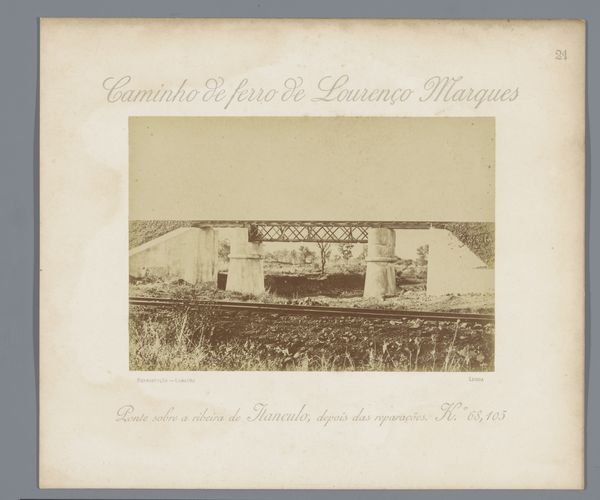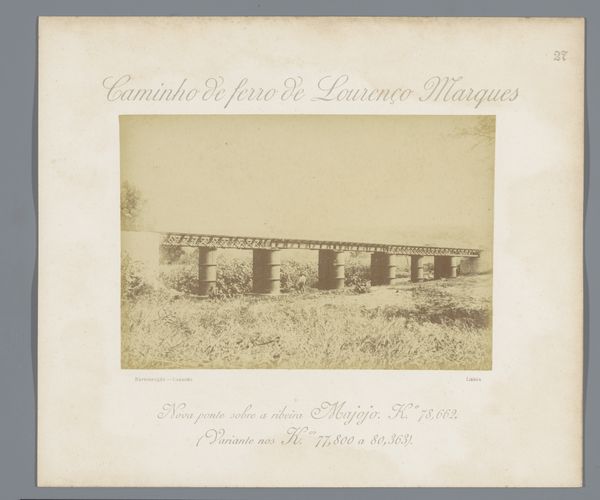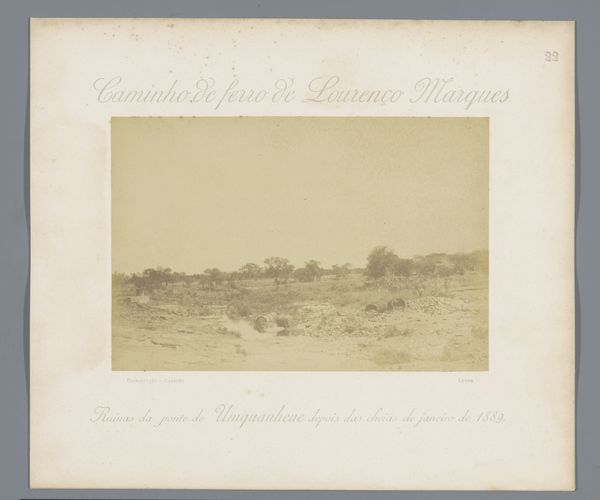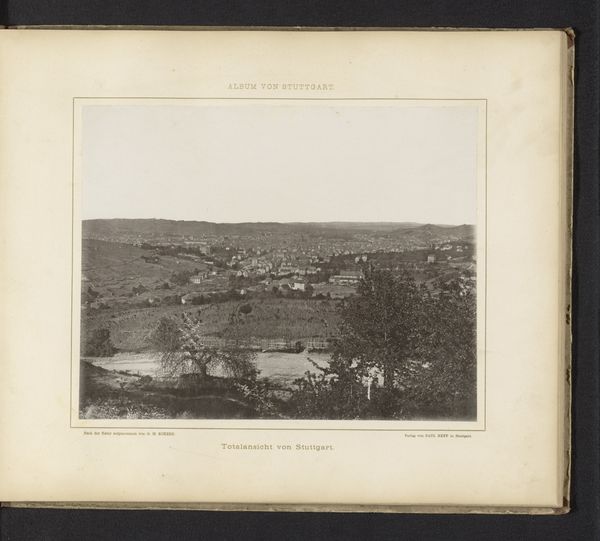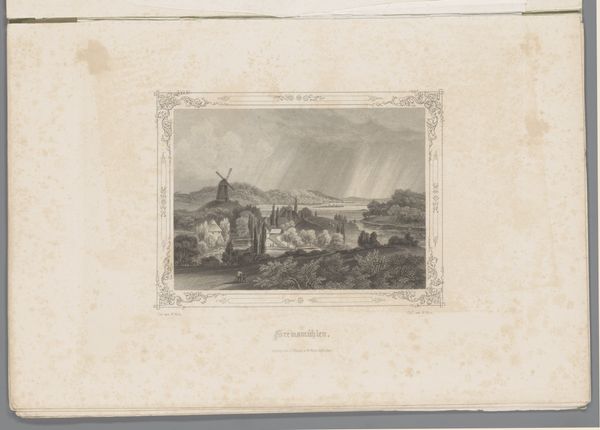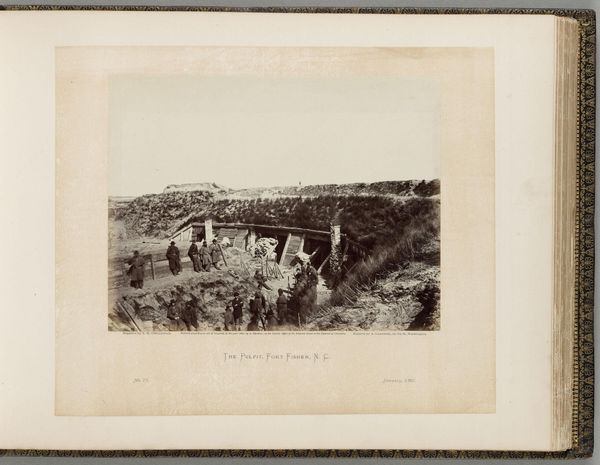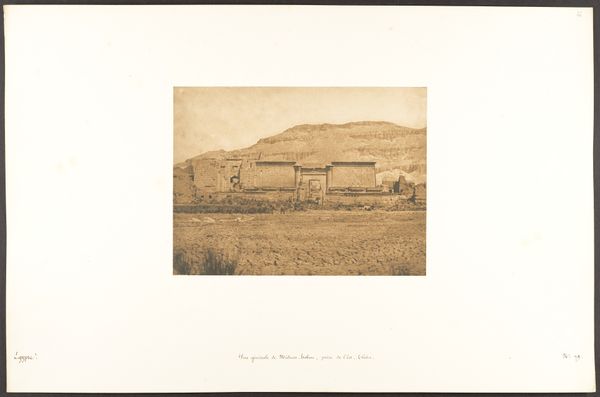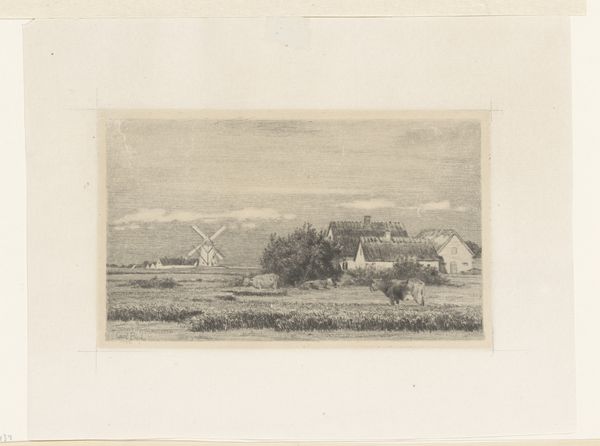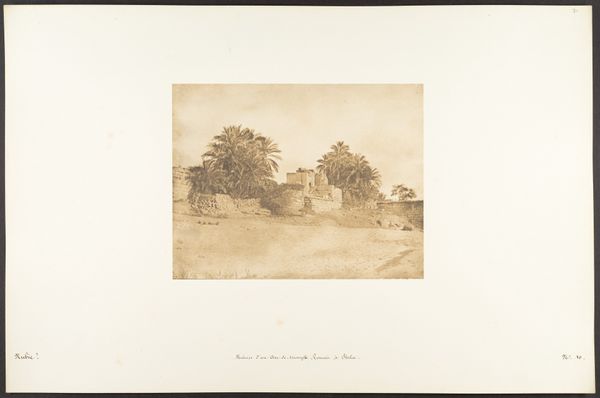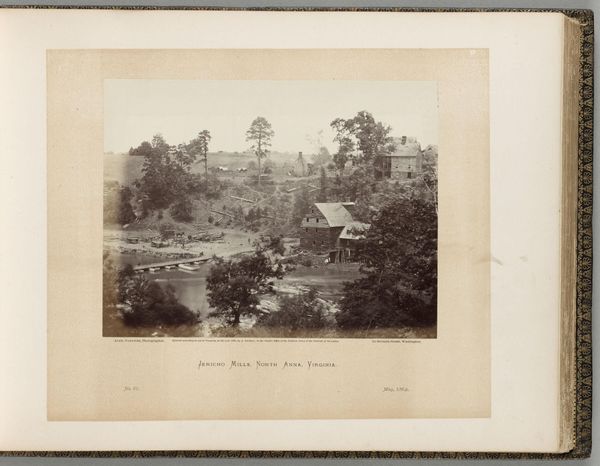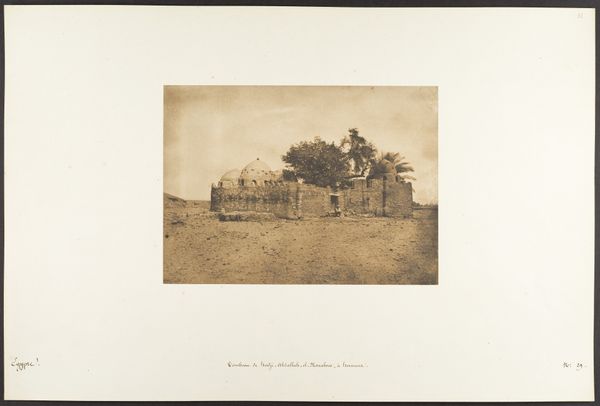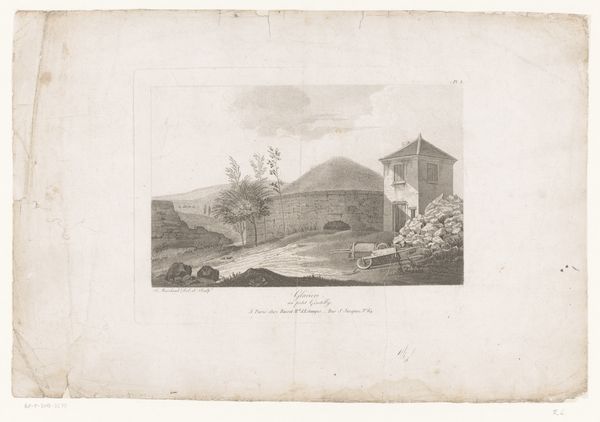
Aanleg van treinsporen en een spoorbrug bij Movene in Mozambique c. 1889 - 1895
0:00
0:00
print, photography, gelatin-silver-print
# print
#
landscape
#
photography
#
orientalism
#
gelatin-silver-print
Dimensions: height 113 mm, width 165 mm
Copyright: Rijks Museum: Open Domain
Curator: The gelatin silver print before us, taken sometime between 1889 and 1895, captures "The Construction of Railway Tracks and a Railway Bridge near Movene in Mozambique," by Manuel Romão Pereira. What are your first thoughts? Editor: The sepia tones lend a melancholic air, don’t they? A sprawling landscape muted by the photographic process. It speaks of raw labor and a very deliberate construction. Curator: Indeed. It is not simply a depiction of work; it encapsulates the profound transformation wrought upon Mozambique during this era of Portuguese colonial expansion. Notice how the railroad, a symbol of progress and connection, simultaneously embodies intrusion and control. Editor: Absolutely. The very materials piled in the foreground - the stacks of wood and stone - all speak to the extraction and the application of resources towards this specific end. One can only wonder where the materials were sourced and by whom. Curator: That’s a keen point. The indigenous Mozambican people were directly involved in this construction. This photo, in its stark portrayal of labor and infrastructure, becomes a document that intersects with complex issues of power, and economic exploitation during that colonial period. Editor: Precisely. And while it presents itself as a record of progress, it's impossible to ignore the human cost embedded within the gelatin silver. Look closely. Do you think it fairly shows or accurately portrays that labour? Curator: It provides an undeniably romanticized, or at least distanced, vision. By immortalizing a scene, it contributes to an idea of “civilizing” that serves specific agendas in this era of mass expansionism and public projects. Editor: I think considering the colonial gaze, our responsibility when seeing the images made in this context is to resist accepting this ‘civilizing mission’ narrative at face value. We need to keep unearthing the forgotten processes and lived experiences that really defined these monumental constructions. Curator: A valuable reminder to consider critically how history is presented and constructed, both literally and figuratively, within a visual frame. Editor: Indeed, and through material investigations, we may be better prepared to unpack their original claims and assertions.
Comments
No comments
Be the first to comment and join the conversation on the ultimate creative platform.
